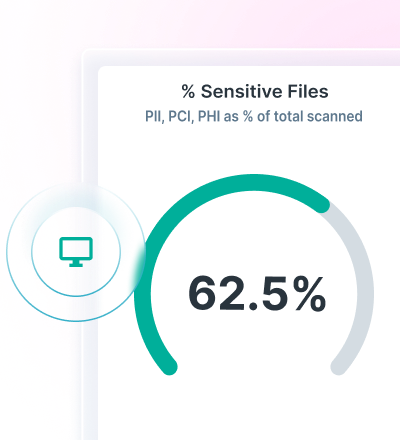Why Identity-First Security Is Now the Backbone Of Enterprise Cyber Defence
0 minutos de leitura

Nick Savvides
Kieran Laffan
The shift toward identity-based security stems from changes in how enterprises operate and how attackers adapt. Distributed work models, cloud-based systems and AI-driven tools have broken the traditional perimeter. At the same time, threat actors increasingly focus on identity infrastructure because a compromised identity provides immediate and high-level access. These pressures have pushed identity to the centre of modern cyber defence — reshaping how organisations think about control, visibility and risk.
The decline of perimeter-based security and the rise of identity-based security
Fixed network boundaries once helped organisations separate trusted and untrusted activity. Today, staff access systems from home offices, mobile devices and multiple cloud environments. Contractors and third-party partners often connect directly into internal systems or SaaS tools.
With traffic — and data — flowing well beyond the corporate network, the perimeter no longer provides uniform protection. Identity is the only element that remains present across all these access points. Every access request begins with a user, device or service identity. It moves through APIs, cloud services, data repositories and AI platforms. Because identity is the consistent touchpoint across this entire ecosystem, it provides the most reliable place to enforce policy, verify intent and manage risk.
As infrastructure grows more distributed, identity replaces location as the foundation of trust and becomes the central point where security and identity management converge to enforce enterprise-wide controls.
How attackers exploit the identity layer
Threat actors concentrate on identity because compromising credentials delivers direct entry. MFA fatigue attacks, session hijacking, token theft and privilege escalation allow attackers to impersonate legitimate users and move freely between cloud services and internal systems. Once they gain control of an identity, they blend into routine activity, which makes traditional perimeter-based detection far less effective.
The breakup of the perimeter and the rise of identity-centric threats have converged to reshape enterprise security. Identity-based security has become the most stable, complete, and meaningful control layer.
Why data security and identity management work together
Enterprises now treat identity access management and data security as interconnected disciplines. Entitlements, access paths and role definitions must reflect the sensitivity of the data they expose. When identities hold excessive or ungoverned privileges, data loss prevention becomes inconsistent and leaves security teams to respond after exposure has already occurred.
When identity-based security controls and data protection policies operate on the same framework, security teams gain full visibility into how data is accessed, used, and moved across cloud services, SaaS tools and internal systems. This alignment provides a clearer picture of the data lifecycle and makes it easier to enforce appropriate controls.
AI adoption strengthens the need for this combined approach. Staff often paste code snippets, documents, internal logic or sensitive information into external AI platforms that retain submitted content. These tools sit outside the organisation’s control and create new data exposure pathways. Identity-first security introduces guardrails by limiting which identities can interact with AI platforms and by blocking sensitive content from being uploaded in the first place.
Zero trust: The framework that operationalises identity-first security
Zero Trust has become the dominant architecture for enterprises modernising their security strategy. The model centres on the assumption that every access request carries some level of risk, so validation must continue throughout the user’s interaction with the environment.
- Continuous verification and context-aware access
Verification occurs at multiple points in the session, not only at login. The system evaluates signals such as user behaviour, location, device posture and session activity. If conditions shift, controls can tighten instantly.
- Least-privilege access based on identity risk levels
Permissions are limited to the resources required for a specific role. Excessive entitlements, shared accounts and dormant access pathways are systematically removed. This reduces the scale of damage if a credential is misused.
- Micro-segmentation to contain lateral movement
Identity-driven segmentation restricts how far a compromised identity can travel. Instead of granting broad network access, the system limits the blast radius by enforcing fine-grained controls based on identity characteristics and data sensitivity.
How to build a mature identity-first security strategy
Senior security leaders across Asia Pacific are strengthening identity-driven controls as part of broader digital transformation programs. The most effective strategies share several characteristics.
- Unify visibility across every environment
A distributed environment requires correlated identity and data insights from multiple platforms. Visibility must cover every access request, data interaction and entitlement change. Fragmented tooling limits the ability to detect high-risk behaviour.
- Apply policy at the identity layer
Policies tied to network zones or static infrastructure struggle to adapt to cloud-native workflows. Placing enforcement at the identity layer strengthens security and identity management, providing consistent control across SaaS tools, mobile devices, on-premises applications and cloud environments.
- Detect misuse through behavioural signals
Static policies cannot recognise subtle deviations in behaviour. Behaviour-based monitoring identifies unusual patterns such as abnormal data extraction, access outside expected work hours, or privilege escalation attempts. These patterns provide early indicators of credential compromise.
- Align identity governance with data protection
Identity governance defines who receives access. Data protection defines how that access is used. When these functions operate together, organisations gain the ability to prevent misuse before data leaves controlled environments. This alignment strengthens compliance, incident response and operational efficiency.
Identity-based security defence is now enterprise standard
Across APAC, identity-driven controls are becoming the core layer of enterprise cyber defence. Hybrid workforces, cloud expansion, SaaS reliance, and the rapid adoption of AI tools have created environments where identity determines nearly every access decision. Attackers recognise this shift and increasingly target identity systems, forcing organisations to strengthen their approach to security and identity management.
Enterprises that build their strategy around identity gain stronger visibility, a more stable security architecture, and better control over sensitive information. Identity-first security provides a clear path for organisations seeking to reduce complexity, manage risk and support modern ways of working.
Protect identity and data together with Forcepoint
Organisations across Asia Pacific use Forcepoint’s data-centric security ecosystem to strengthen identity-based protection and gain visibility over how users interact with sensitive information.
Solutions such as Forcepoint DSPM, Forcepoint DLP Enterprise, Forcepoint DLP SaaS, and Forcepoint Data Security Cloud provide protection across cloud, endpoint and AI platforms — all within a unified framework.
These capabilities help enterprises:
- Restrict sensitive data uploads to AI platforms
- Align identity context with data usage
- Reduce security complexity across distributed environments
- Strengthen compliance and breach mitigation
- Streamline operations through centralised management
To explore how identity-first security and data protection can operate together in your organisation, the Forcepoint team can support your next step.

Nick Savvides
Leia mais artigos de Nick SavvidesNick Savvides serves as Field CTO & Head of Strategic Business, APAC at Forcepoint. In this role, he is responsible for growing the company’s strategic business with its key customers in the region. This involves taking the lead to solve customers’ most complex security issues while accelerating the adoption of human-centric security systems to support their business growth and digital transformation. In addition, Savvides is responsible for providing thought leadership and over-the-horizon guidance to CISOs, industry and analysts.

Kieran Laffan
Leia mais artigos de Kieran LaffanKieran Laffan serves as Field CTO at Forcepoint, where he champions enterprise-scale data risk assessment and AI-driven classification strategies. Previously he led strategic alliances and field CTO functions at GetVisibility and earlier held senior engineering and sales-engineering roles at Varonis, bringing deep hands-on experience in data security architecture and go-to-market execution.
No Artigo
X-Labs
Receba insights, análises e notícias em sua caixa de entrada

Ao Ponto
Cibersegurança
Um podcast que cobre as últimas tendências e tópicos no mundo da cibersegurança
Ouça Agora








